On-demand healthcare apps are the new gateway to fast, efficient, and affordable medical care. They are slowly disrupting healthcare systems worldwide and are driving the search for more universal, accessible healthcare services.
With the birth of modern mobile technologies and their worldwide availability, universal consumer trends have kindled a newfound need for immediacy in the delivery of goods and services. Users have become more demanding in how fast and efficiently they can access certain services or purchase certain products; long waiting times and lines are no longer commonplace, nor are they tolerated. As a result, on-demand mobile applications for many services are becoming a hot trend in the startup universe. Popular mobile on-demand apps such as Uber, Postmates, Lyft, and Airbnb have shrewdly tapped into this need for speed and have disrupted the worldwide market. On-demand apps are helping companies of all shapes and sizes provide better customer service, increase coverage and product accessibility, and promote business growth, all at low operational costs. And even though these popular on-demand apps are disrupting the mobile market, one sector is slowly but surely reaping the benefits of these types of apps: healthcare. On-demand healthcare apps are new, hot, and will surely refashion the way we access medical services.
Although not widely adopted or globally available yet, on-demand healthcare apps are steadily growing and revolutionizing medical care the same way Uber transformed transportation services. In addition, these or Airbnb shifted the hospitality paradigm. The healthcare sector is witnessing how on-demand apps are helping patients access medical services and clinical care almost instantly. Similarly, medical professionals and healthcare institutions are starting to use different on-demand healthcare apps developed by skillful healthcare app developers to release workloads and provide their patients with the best medical care services.
Let’s look at what on-demand healthcare apps are, some of their most significant features, and how they are disrupting the mobile healthcare ecosystem.

What Are On-Demand Healthcare Apps?
Although healthcare is a crucial industry, when we talk about adopting and implementing mobile and remote services, it hasn’t evolved as much or as fast as other sectors in the last couple of decades. For most of the world’s population, medical care remains an in-person, in-office experience. Whether it’s because of a lack of mobile networks, no possibility of online consultations, or simply lack of trust in modern technologies, most patients still make appointments to see a doctor in person and wait for long hours in offices and hospitals to access medical services. There’s still a pervasive notion that in-person medical care is king when it comes to trust and convenience. However, modern mobile technologies are slowly sneaking into peoples’ lives and changing that notion in favor of mobile healthcare services. One of the by-products of this paradigm shift that traditional medical care is undergoing is on-demand healthcare apps.
On-demand healthcare apps are medical applications that patients use on their mobile devices to access online healthcare services instantly and in real-time. These healthcare services can range anywhere from booking appointments to carrying out video consultations with their physicians, anywhere and anytime. Whichever the purpose or type of healthcare application, the main goal of all on-demand healthcare apps is the same: helping patients access medical services whenever and wherever, fast and efficiently, through their mobile devices. This way, on-demand healthcare apps can make medical services accessible all the time, which is what makes them so helpful and critical for modern healthcare institutions and systems worldwide. This phenomenon can lead to patients getting a doctor in their house faster than seeing a doctor in person and having access to doctor reviews and ratings, all of which before on-demand healthcare apps, was unheard of. Pair this with the fact that people love getting what they want when they want it, and we have a new trend on the horizon.
The on-demand app trend couldn’t come at a better time. Aside from covid completely upending healthcare systems worldwide, chronic disease is on the rise, with countries like the US increasing their healthcare expenditure while physicians’ workload grows. For instance, as of right now, the US has a population of 322 million people. According to a study, there are currently 552,310 active physicians in the country. If we factor in that 84.9% of adults visited a healthcare professional this past year at least once, we can safely conclude that the healthcare system will eventually collapse unless we find other alternatives to medical care delivery. Here’s where on-demand healthcare apps become so crucial. Instead of scheduling an appointment, waiting for availability, and seeing a doctor in person, patients can now instantly see a physician from their homes with the possibility of continuing their treatments remotely. It sounds like a blessing, doesn’t it? Here are some of the main ways on-demand healthcare apps can revolutionize mobile healthcare.

How Can On-demand Healthcare Apps Transform Healthcare?
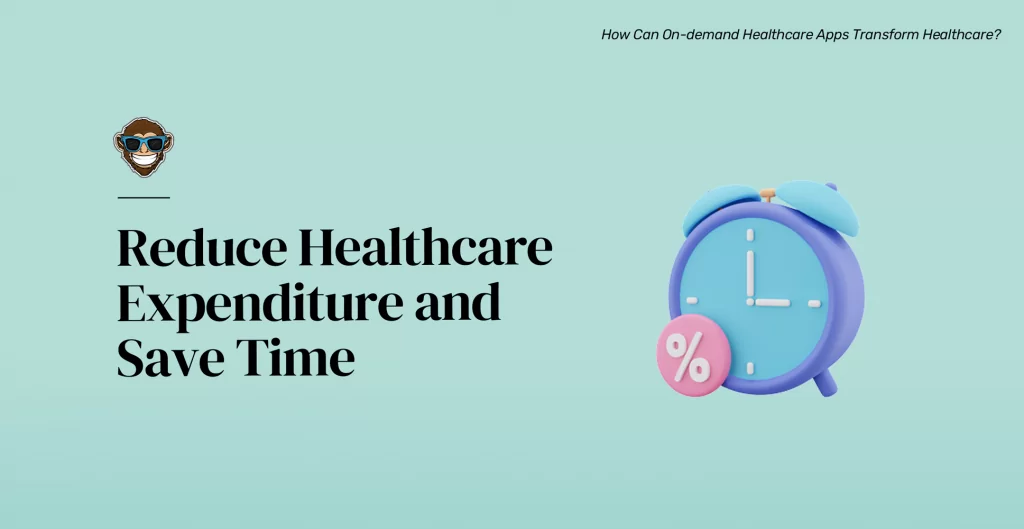
1. Reduce Healthcare Expenditure and Save Time
The main reason for the increasing popularity of on-demand healthcare apps is saving time and money for all participants. As with any business type, time and money are the two most crucial things that define success. In healthcare, it’s no different, but with the aggravating factor that in medical care, wasting time can cost lives. For this reason, on-demand healthcare apps are a godsend for healthcare systems and stakeholders alike. On the one hand, the waiting halls full of patients, the long lines, and full physician schedules are frustrating, cumbersome, expensive, and time-consuming for hospitals and clinics. A survey conducted in the US showed that, on average, it takes 24 days for a patient to get an appointment with a physician in big cities and 32 days in medium and small towns.
The survey also showed that wait times to get an appointment went up by 30% from 2014 to 2018. This phenomenon is problematic, especially for patients who suffer chronic illnesses and need constant monitoring, urgent care, and immediate attention. On-demand healthcare apps can help eliminate this frustration to a great extent by assisting the patients in booking appointments quickly, in case of mandatory in-person visits, and see their doctors virtually in an instant with no lines and waiting times, in case of telehealth services. This way, patients can access medical care instantly and efficiently, thus releasing pressure on clinics and hospitals, releasing physician workload, and freeing up time for those patients who must see their doctors in person.
On the other hand, patients can save time and money by scheduling telehealth appointments from their homes by using on-demand healthcare apps. They don’t need to devote an entire afternoon and take time off work to accommodate their doctor visits. They also don’t have to spend time traveling to the hospital or clinic and can save valuable resources by eliminating transportation expenses. As a result, the whole patient experience improves significantly, especially for patients who live far away from their physicians or those who live in regions with no access to medical services or lack of hospital infrastructure. And, depending on the type of on-demand healthcare app and the services it provides, patients who need in-person visits can even request a physician to go to their homes, providing benefits for both the medical professional and the patient.
For doctors, on-demand apps mean the ability to interact better and faster with their patients. They can not only provide on-demand remote consultation services, freeing up their schedule, but they can also monitor their patients using on-demand healthcare apps. In addition, these apps can capture and analyze patient data using IoMT devices, or other intelligent medical gadgets that patients use from their homes and doctors can review. These capabilities provided by on-demand healthcare apps translate to better medical care delivery. In addition, they could mean a potential release of most of the pressure that healthcare systems worldwide are currently under.
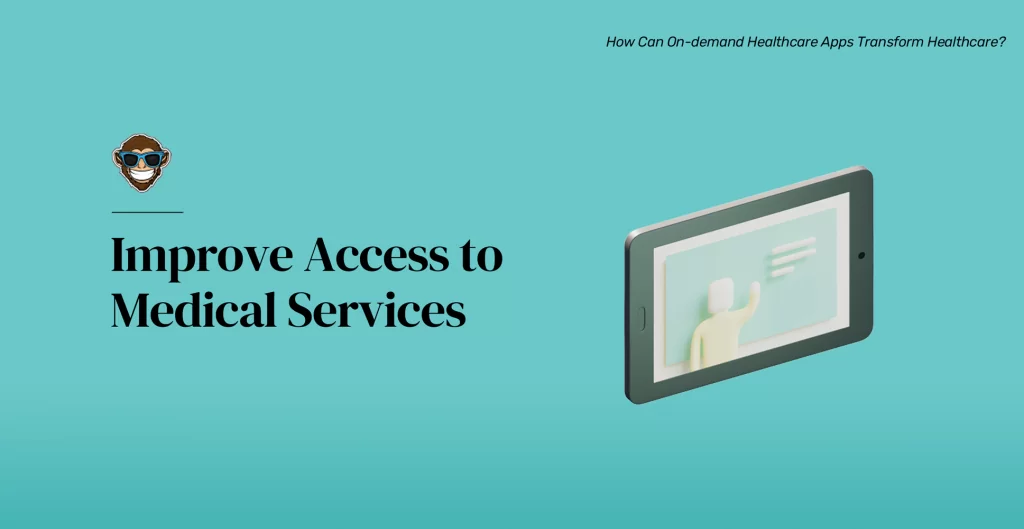
2. Improve Access to Medical Services
The essence of on-demand healthcare apps is the fact that they are mobile. This crucial aspect makes them easy to use and access, providing their benefits to anyone with an internet-connected device. On that same token, as of June 2021, there were 5.28 billion mobile device owners in the world, meaning that more than almost 70% of the world’s entire population has the potential to access on-demand healthcare apps. Additionally, about 60% of the people on the planet have constant access to an active internet connection. In contrast, less than half of the world’s population has access to essential healthcare services, making us think that more people could access on-demand healthcare apps than in-person healthcare services.
Even when people live in countries with no decent healthcare infrastructure or available physicians, they still could potentially access medical services online using on-demand healthcare apps. For instance, a doctor in the US could do a real-time online consultation for a patient in Tanzania, monitor their health condition, prescribe medications, and suggest treatment avenues that would otherwise be impossible–or harder–to access in person. This would significantly improve access to medical services in regions with inadequate healthcare systems and improve outcomes for patients worldwide, regardless of where they reside.
Additionally, on-demand healthcare apps can support expanding the range of medical specialty offerings, which can help address provider shortages in many parts of the world. For instance, 56% of US counties lack mental health professionals, and about 70% lack child psychiatrists. On-demand healthcare apps can help target this scarcity of medical specialties by giving patients access to online consultations from their homes, wherever and whenever regardless of the provider’s or the patient’s location. This benefit can help tackle shortages and expand medical care coverage without the need for infrastructural modifications or monetary investments of any kind, especially in rural areas or even in third world countries, where many vital specialties are not always available.
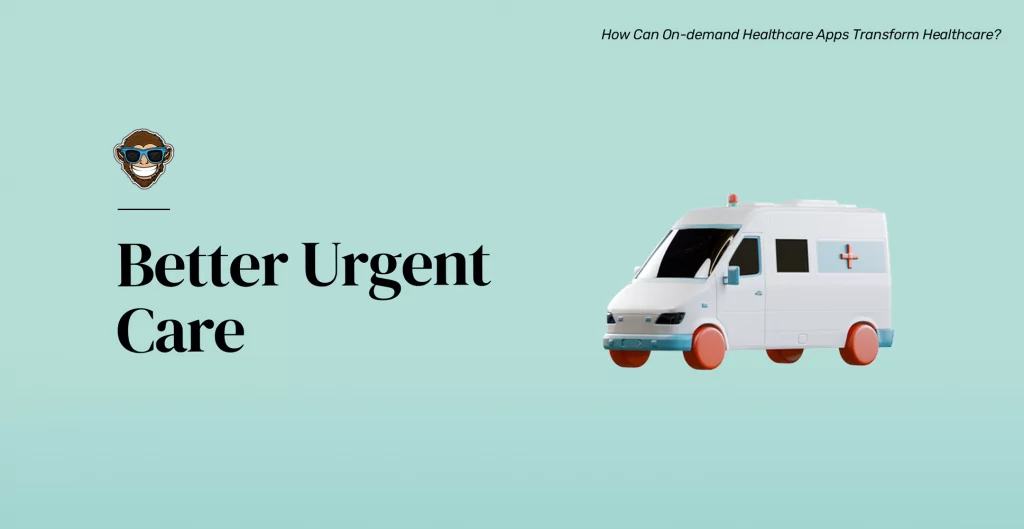
3. Better Urgent Care
Emergency rooms are one of the most concurred and crowded healthcare facilities in the world. According to the CDC, nearly 136 million patients visit emergency rooms in the US alone each year. Additionally, almost 50% of those patients visit the ER for non-urgent, non-life-threatening reasons. This phenomenon is concerning because it means that a large number of people attend ERs without needing to, overflowing the system, raising public healthcare costs, increasing physician workload, and taking time away from patients who do require urgent medical care. On this matter, studies show that the US could save more than $18 billion annually if those non-urgent patients avoided relying on ER visits to address their medical needs.
Luckily, the fast, real-time nature of on-demand healthcare apps makes them ideal in these urgent medical situations. For one, if a patient is experiencing acute symptoms or any other life-threatening condition, like a severe accident or a heart attack, they can quickly arrange an ER visit using an on-demand healthcare app and get seen immediately when they arrive. In addition, they–or a family member–can also request an ambulance, talk to a doctor while on route to the ER, and start triaging the patient to speed up the medical care process. Lastly, they can also schedule a house call or telehealth consultation to receive instant support depending on their particular situation.
On the other hand, if a patient thinks they need urgent medical care but doesn’t (i.e., a headache or flu symptoms) and requests an ER visit, the physician–or the app–can deter the patient from attending the ER and tend to them virtually without an ER visit. These features of on-demand healthcare apps can significantly ameliorate ER overcrowding, reduce physician burnout, reduce healthcare expenditure, and improve patient outcomes.
Additionally, hospital and ER doctors also benefit immensely from on-demand healthcare apps. Studies show that, out of all the physicians who experience burnout, emergency room doctors had the highest burnout rate, with more than 60% of them stating they feel it or have felt it in the past. With on-demand healthcare apps, they can quickly release some of their workloads by filtering out non-emergency patients, doing triage via the app, monitor patients remotely, and even visit patients at their homes if the situation calls for it. They can also monitor vital signs when the apps are paired with IoMT devices, they can connect them to medical devices in the Er, and they can even keep an eye on their patients when their conditions require them to be admitted into the hospital.
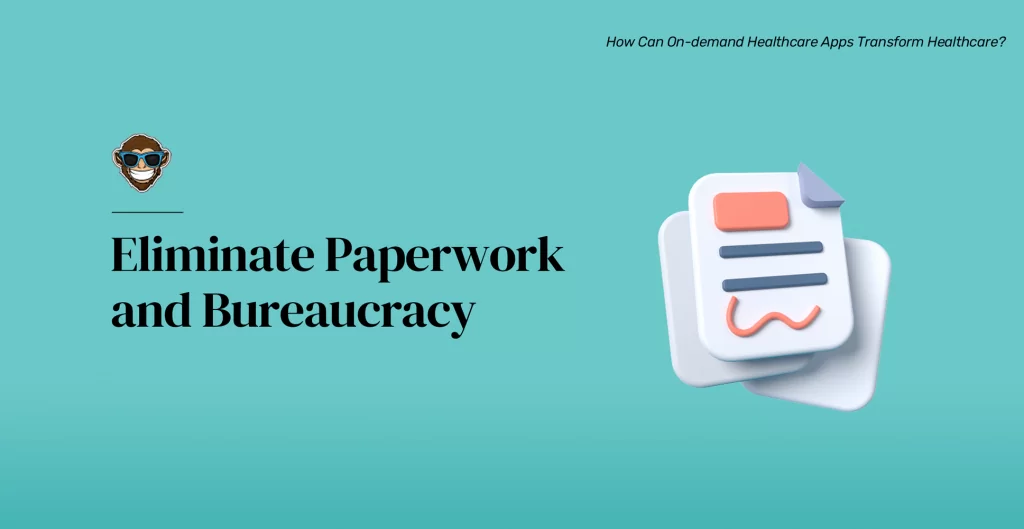
4. Eliminate Paperwork and Bureaucracy
It’s no secret that healthcare systems worldwide thrive on paperwork. Even in the age of modern technologies, where most data, billing, and filing systems are digitized, there are still bureaucratic processes, especially insurance-related, that require stakeholders to go through extensive amounts of paperwork. The burden of these unnecessary bureaucratic processes and never-ending paperwork for doctors and patients fragments healthcare delivery flow, increases medical care costs, and hampers the system’s efficiency. For instance, in the US, over one-third of the country’s healthcare costs are due to insurance company paperwork and doctors spending too much time on documentation and billing. As a matter of fact, one study found that doctors spend more time on documentation than tending to patients: almost 70% of the surveyed physicians spent over four hours a day doing paperwork. Moreover, all that paperwork is at risk of getting lost, misplaced, misfiled, or wrongly filled, creating conflict in the system’s workflow, risking patient data leak, and increasing the friction in the entire medical care delivery process. Additionally, it can increase physician burnout rates and prevent patient satisfaction.
Thankfully, most of these problematic issues can be addressed and potentially solved by on-demand healthcare apps. Since one of the main benefits of mobile apps is portability, collecting and communicating information through mobile digital tools is more straightforward, safer, and more efficient. In the case of on-demand healthcare apps, all the info usually recorded and shared via paperwork can be easily stored, accessed, and transmitted using Electronic Health Records (EHRs). EHRs are the electronic version of a patient’s health data and are the digital equivalent of a paper medical chart. Aside from medical history and other health-related data, EHRs usually contain a patient’s demographic, insurance, billing, and personal information.
On-demand healthcare apps can also store patient information in the shape of Electronic Medical Records (EMRs), a more simplified way of recording an individual’s health-related data. EHRs tend to provide a more holistic view of a patient’s health and personal history, which is why they are so sensitive, and apps that store them–and EMRs as well–must be HIPAA compliant. Nonetheless, even with the regulatory requirements, EHRs and other digital means of recording and sharing patient data are more efficient than paperwork. On average, physicians spend only 16 minutes updating EHRs per patient, which is a significant improvement from the four hours spent on manually filing paperwork.
Additionally, since patient data is one of the most critical things for healthcare organizations, the safety, and confidentiality of said data is paramount. A single mistake in filling out a form, one piece of paper that gets misplaced, or a loss of critical patient data can cause losses in millions of dollars and the patients’ trust. This way, on-demand healthcare apps offer significant advantages to all stakeholders; they often come with several features that, aside from helping eliminate paperwork, can help keep patient data highly secured and manageable. They also come with features that allow medical professionals and insurance companies, when applicable, to access said data via their own devices, thus eliminating the need for manual filing and extensive paperwork.
Lastly, with on-demand healthcare apps, patients will no longer need to fill never-ending forms repeatedly per visit and file them with several entities. Instead, they can simply upload all the required information to their profile in the app and, from there, share it with stakeholders whenever applicable. Regarding IoMT or other intelligent medical devices, vital signs and other health data can be instantly recorded and uploaded in the app for the physician to access in real-time and take action whenever necessary. The app will store this information in its database, and, with just a few clicks or the swipe of a finger, the medical staff can access it. In addition, they can use it to automatically generate bills, medical certificates, health reports, and file insurance claims, all without the need for a single piece of paper.
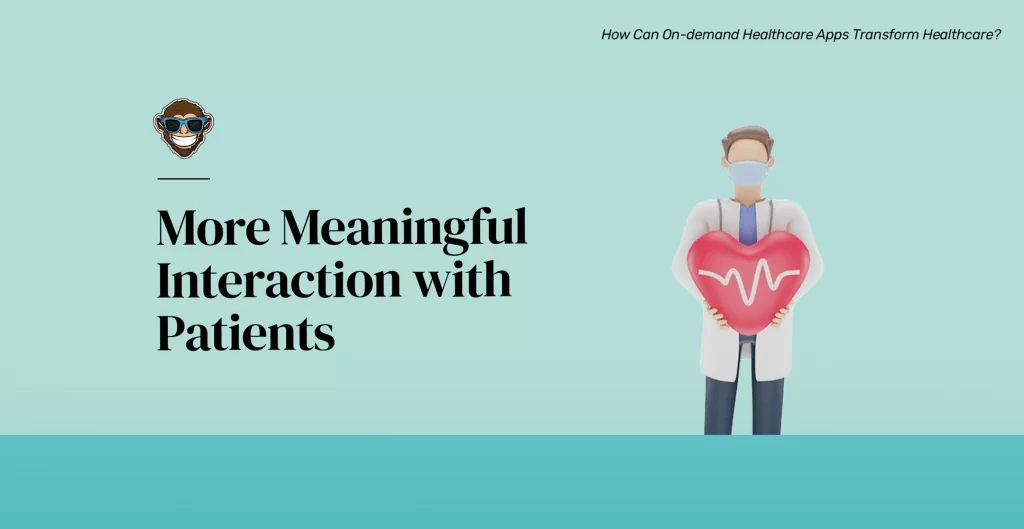
5. More Meaningful Interaction with Patients
Clear and timely communication between doctors and patients is essential for delivering quality medical care. It has been observed that US hospitals lose around $12 billion annually because of communication inefficiencies between physicians and patients. Research has also demonstrated a strong connection between good communication and treatment adherence, lower admission and readmission rates, improved mortality rates, and lower costs per patient. However, in the traditional healthcare scenario, communication channels are often fragmented, with doctors spending on average from 15 to 20 minutes per patient. Burdened by mountains of paperwork and long waiting lines of unattended patients, they tend to expedite appointments to quickly get to the next patient and avoid wait times from getting longer. This phenomenon causes doctors not to get enough time to build rapport with their patients and interact with them long enough to discuss their conditions thoroughly. Additionally, patients don’t engage with their physicians or their treatments, leading to non-adherence, which increases the risk of chronic illnesses getting worse.
Unlike the communication problems that stem from in-office settings, online medical consultations powered by on-demand healthcare apps can allow doctors to spend more time with each patient. As a result, when doctors are not experiencing burnout or are pressed for time, they can capitalize on their skills and provide the best medical care to their patients, ensuring proper diagnosis and treatment adherence. Additionally, virtual consultations and on-demand house visits can help eliminate the need for in-person follow-ups, paperwork, waiting times, and burnout. With the help of features like voice, video, and audio calls and chats, patients can calmly and efficiently convey their medical issues to their doctors. As a result, doctors can understand them and empathize, which ultimately helps improve the quality of medical care and strengthen doctor-patient relationships.
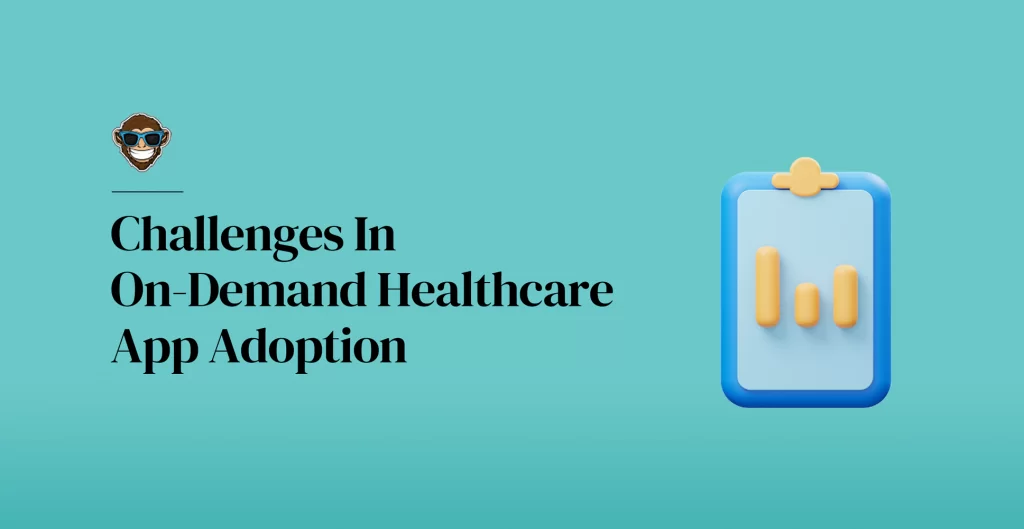
Challenges In On-Demand Healthcare App Adoption
Even though on-demand healthcare apps sound like a godsend for the healthcare ecosystem, they’re not without their challenges. Unfortunately, some of these challenges might be keeping the sector from going all-in with on-demand healthcare apps and reaching the state of complete digitalization. However, we are confident that the industry’s stakeholders and app developers, like us, are taking the necessary measures to solve these issues and drive on-demand healthcare forward.
• Compliance & regulations issues
While the benefits of on-demand healthcare apps for the healthcare ecosystem are evident, the fact remains that healthcare is a highly regulated industry. When patient health and personal data is stored and shared between two parties, there is a considerable risk of leaks and hacking where these data can be used unlawfully by thieves. Therefore, governments and entities worldwide have established a set of regulatory measures that apply whenever these data are handled and shared. HIPAA regulations in the US, the GDPR in Europe, and PIPEDA in Canada are some of the regulatory acts implemented by governments to protect the integrity of medical and personal data. As a result, app developers who ship on-demand healthcare apps must meet whichever regulations apply to the territory where their product will be used if they want these apps to become handy tools for hospitals, practices, and patients.
• Security and Privacy
As stated above, whenever mobile products store and share sensitive information, exhaustive security measures apply. On-demand healthcare app users expect their data to be as secure as with FinTech or banking apps. Still, security in medical apps is always a challenge. There are countless horror stories about data leaks and stolen patient information that makes us wonder why app developers would let their guards down regarding their product’s security protocols. Luckily, the compliance requirements that we touched upon on the point above solve most of the security issues for on-demand healthcare apps. However, an app’s security will always boil down to the steps that a development team takes during the entire development process and if they have–or lack–a security-first working model.
Additionally, there are also security concerns regarding the devices themselves. A physician could easily lose their smartphone or leave their computer unlocked at a coffee shop. A patient could get their phone stolen or inadvertently download a virus on the same computer where the app is installed. In these scenarios, the challenge is even more significant. To minimize any safety risks, apps should always have their information encrypted and request access tokens every time someone attempts to access it or any files within.
• Multiple Devices
The mobile healthcare space has multiple device options, and for on-demand healthcare apps to deliver their full potential, they must work seamlessly on all of them. Nonetheless, and even though most stakeholders on mobile devices today, the complexity of interoperability remains a challenge. Patients and doctors interact with a growing number of different devices and operating systems that can make it very difficult but crucial to ensure seamless interoperability and integration across all available platforms. On-demand healthcare apps must easily integrate with IoMT and other medical devices and work seamlessly across all platforms and systems to properly deliver their benefits. Moreover, on-demand healthcare apps that are hard to integrate with the existing systems in hospitals and practices defeat the purpose of efficiency and ultimately make the app useless. And the same goes for patients. If an app is easy to use on their iPhone but hard to use on their Android tablet, they might uninstall it.
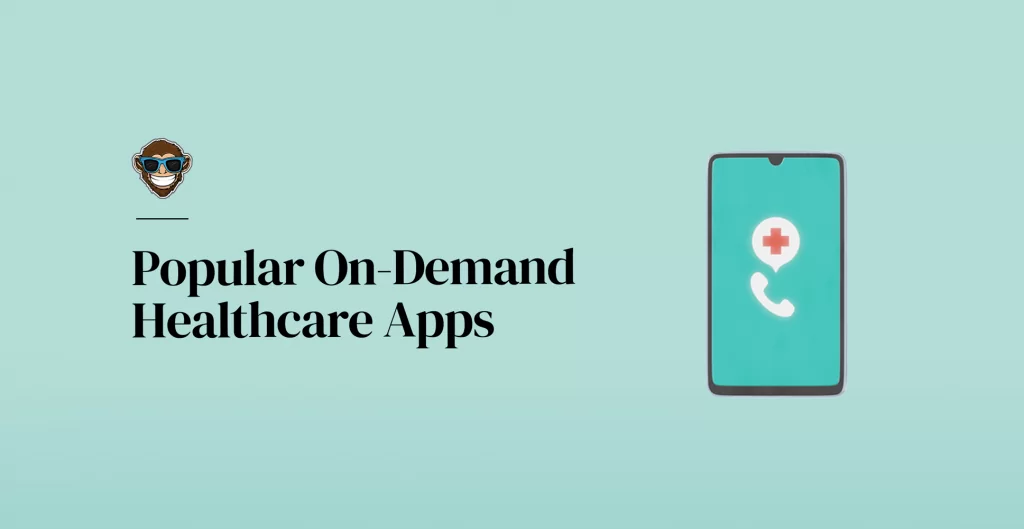
Popular On-Demand Healthcare Apps
- Doctor On Demand: Doctor on Demand is a US-based on-demand healthcare app that provides instant access to certified medical professionals 24/7. It is free to sign up, and the costs vary depending on insurance coverage.
- Teladoc: Teladoc is an on-demand telehealth service that provides patients with immediate virtual medical care. They specialize in non-life-threatening illnesses and injuries and offer video chat or phone call consultations starting at $75 or less, depending on insurance coverage.
- Amwell: Amwell is an online healthcare service that offers on-demand virtual doctor consultations via their mobile app and website. Their app is free to download, and they charge consultation fees depending on the patient’s health insurance coverage.
- Heal: Heal is an on-demand healthcare app that helps patients schedule house calls fast, easy, and affordable. Through the Heal app, patients can access medical services instantly for $159 per visit or less, depending on insurance coverage.
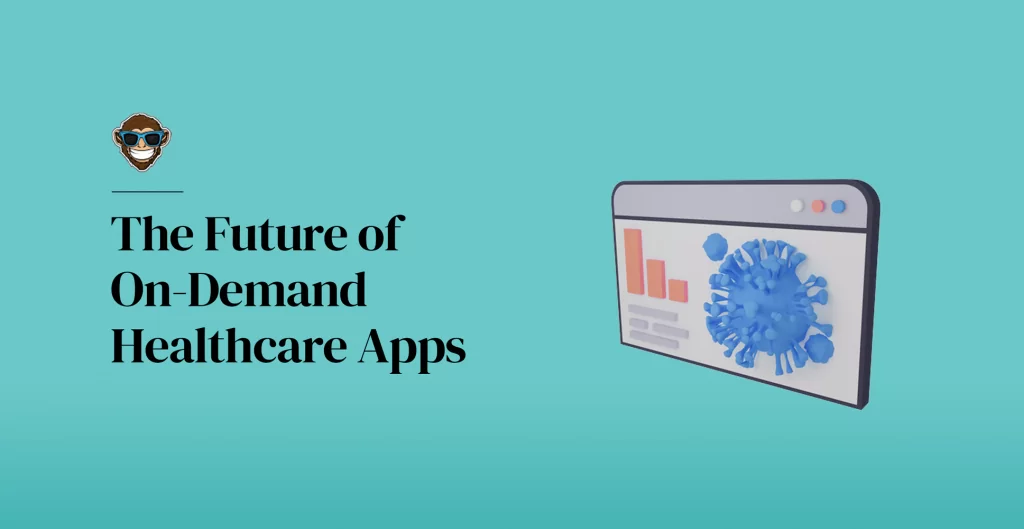
The Future of On-Demand Healthcare Apps
In a society where we’ve been taught that health is wealth, providing fast and efficient medical care to those who need it can define any healthcare system’s success. Having an accessible, affordable, and efficient healthcare ecosystem is exceptionally beneficial for patients, doctors, governments, and institutions alike. For healthcare developers and startups, 2021 is the make-or-break opportunity for shipping on-demand healthcare apps and disrupting medical systems across the globe. With Covid entering the playing field, these apps can make a huge and long-lasting impact on our planet and help the world achieve the healthcare coverage and accessibility that it so badly needs. And, in our current situation, on-demand healthcare apps and virtual healthcare services are becoming the new normal, meaning that the window of opportunity has opened for mobile medical products to take the world by storm.
If you have any questions, have an idea for an on-demand healthcare app, or want to incorporate on-demand features into your existing app, let us know! We can make your vision a reality!
